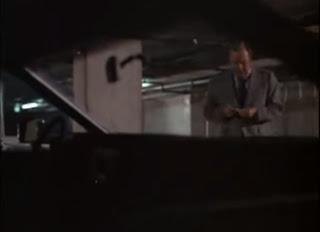Book Review: 'The Winged Man', by E. Mayne Hull and A. E. Van Vogt
1 / 5 Stars
‘The Winged Man’ first appeared in print in 1944 in Astounding Science Fiction, with Edna Mayne Hull – Van Vogt’s first wife - as the sole author. An expanded version was published in 1966 with Van Vogt as a co-author; seeking to fill its early catalog, DAW Books re-issued the novel in 1980 as book No. 378; the luminous cover art is by Douglas Beekman.
The novel starts with a US Navy atomic submarine, the Sea Serpent, cruising in the darkness of the South Pacific. Officer Kenlon espies what appears to be a very large bird flying past the ship; the ‘bird’ soon turns out to be a winged man, who attaches devices of unknown design and purpose to the sub’s surface.
Kenlon and his crew succeed in capturing the winged man; no sooner is he imprisoned below decks, than the submarine is somehow transported to the Pacific Ocean of the far, far future: the year 24,999, to be exact.
It transpires that the Sea Serpent is one of a number of vessels from various centuries, all brought into the future by the winged men. It seems the winged men are losing a war being waged against an aquatic subspecies of Homo sapiens, and they believe the firepower of the submarine, and the other vessels in their unusual armada, can destroy the undersea city of their adversaries.
But as office Kenlon soon discovers, there is more to the story than a war among two races of a future mankind. He and the crew of the Sea Serpent will find themselves forced to make a decision with consequences for the fate of the entire galaxy….
Aware that ‘Winged’ originated as a pulp novel, I had no major expectations upon reading it. Even so, it was a chore to finish.
It’s difficult to tell if Van Vogt’s contribution to the expanded version made the original story worse, or better. But as it stands, ‘Winged’ spends the greater part of its narrative belaboring the interactions between the crews of the various ‘kidnapped’ sea vessels. Indeed, not until the final 11 pages of the book, does the battle promised in the back cover blurbs come to fruition.
As a novel, ‘Winged Man’ is tedious and unremarkable, particularly for a novel re-written in 1966, by which time the prose skills of Van Vogt, at least, should have showed some signs of advancement.
Starting in 1956 with Damon Knight’s essay ‘Cosmic Jerrybuilder’, Van Vogt became the target of increasing disparagement by other sf writers.
I can’t say if the limited set of Van Vogt fiction that I’ve read over the years is of sufficient magnitude to allow me to agree with Knight, particularly in light of the fact that an awful lot of the New Wave content I’ve waded through has represented sf at its worst.
But ‘The Winged Man’ is easily forgettable.































































.jpg)























